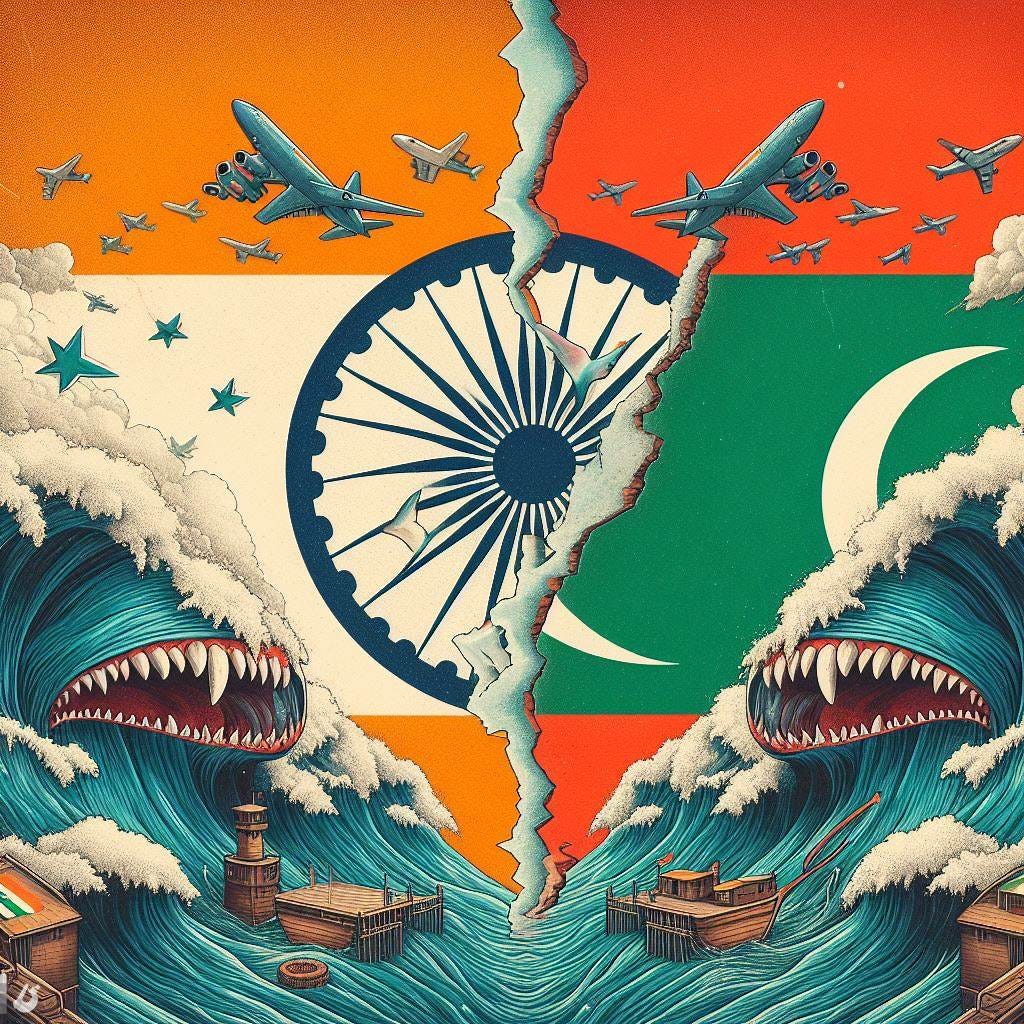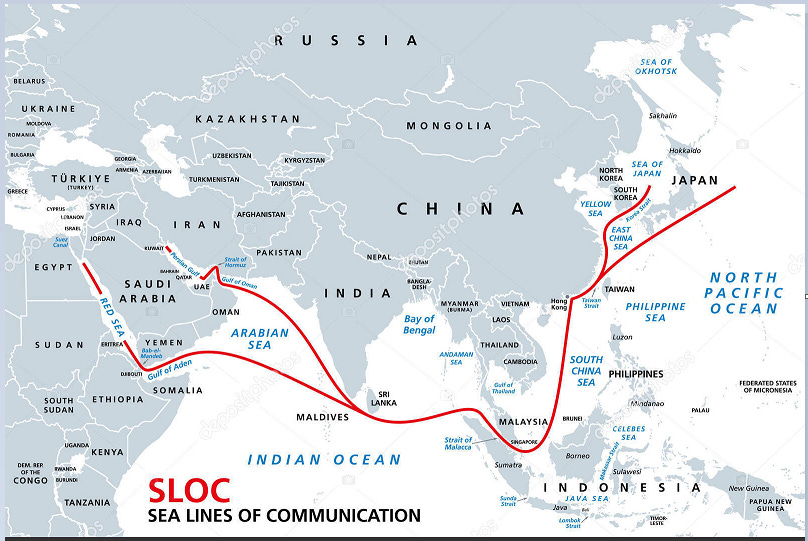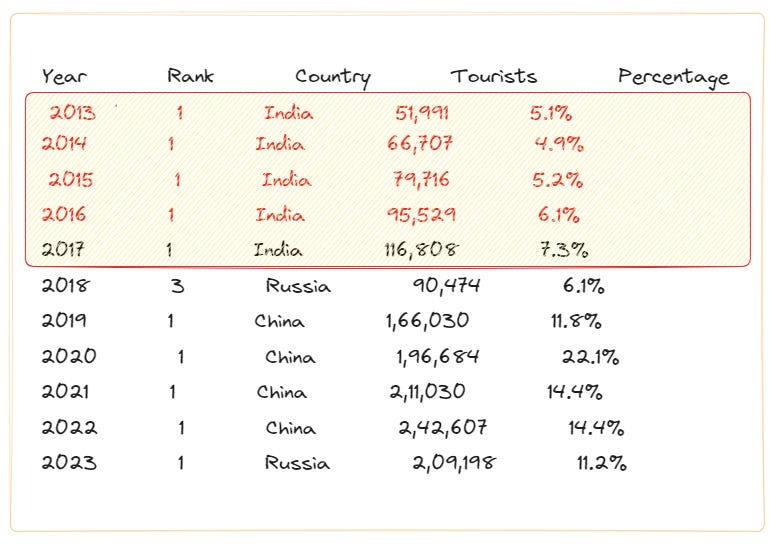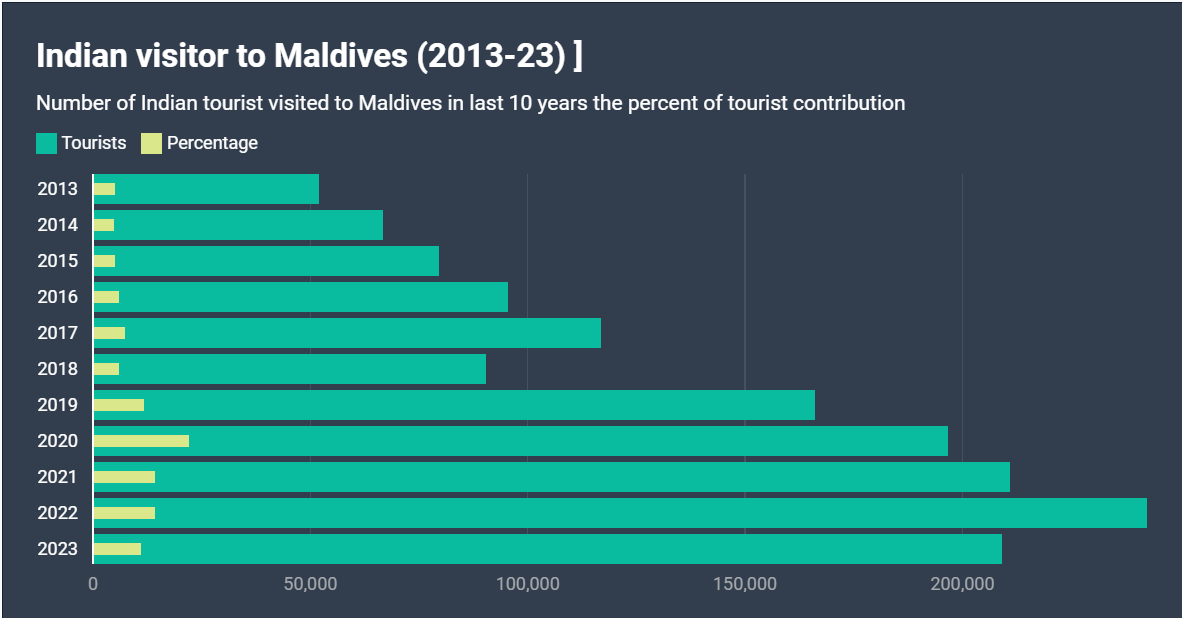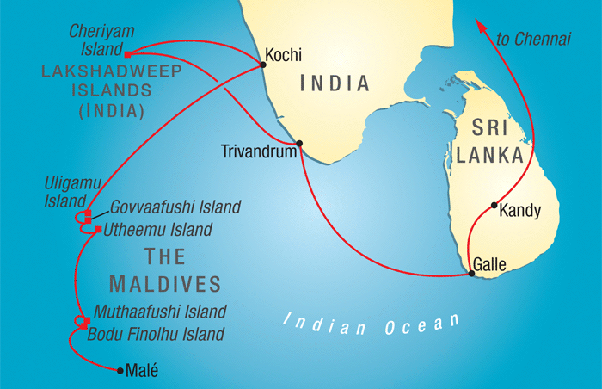India and the Maldives rows: Who will lose the most?
we will take a deep dive into the changes and what is the stake for both India and the Maldives
Social media posts by Maldivian officials may cost the country millions in tourism revenue, as calls by Indian travelers to boycott the island nation intensify.
“We are seeing a 40% drop in bookings over the last two days,” Ankit Chaturvedi, vice president and global head of marketing at the India-based travel software company Rategain, said Tuesday.
Some blamed Modi’s posts for setting off the debacle even though they did not mention the Maldives, which has lost favor in India following the 2023 election of Maldives President Mohamed Muizzu.
Muizzu campaigned on an “India out” policy — in contrast to the Maldivian Democratic Party’s “India First” policy. He also broke with long-standing tradition by choosing China for his first official state visit this week, widely viewed as a snub to India.
The fallout
Two issues need to be examined:
one, the impact of this spat on the India-Maldives relationship, and two, on Lakshadweep as a tourist destination.
India and the Maldives relationship: Who will lose the most?
The relationship between India and the Maldives has been complex in recent months. India is the Maldives' largest trading partner and the source of the majority of its foreign aid. However, the Maldives' increasing ties with China have raised concerns in India.
In recent years, the Maldives has turned to China for loans and investment, which has led to concerns in India that the Maldives is becoming too dependent on China.
Maldives has also expressed concerns about India’s military presence in the Maldives.
The Maldives' government has denied that it is becoming too dependent on China, and has said that it is maintaining a close relationship with India.
So, who will lose the most if the relationship between India and the Maldives deteriorates?
India’s stake
The Maldives is a key strategic partner for India in the Indian Ocean region.
The Maldives provides India with access to important shipping lanes and helps to secure India's maritime borders.
Located at the southern and northern parts of this island chain lies the two important sea lanes of communication (SLOCs).
These SLOCs are critical for maritime trade flow between the Gulf of Aden and Gulf of Hormuz in West Asia and the Strait of Malacca in Southeast Asia.
Besides, Maldives is a member of the South Asian Association for Regional Cooperation (SAARC) and the South Asia Subregional Economic Cooperation (SASEC).
If the Maldives becomes too dependent on China, it could pose a security threat to India.
China's military presence in the Maldives could allow China to monitor Indian naval activity and could also provide China with a base from which to launch attacks on India.
China Maldives recent agreements:
A statement issued by the Maldivian Foreign Ministry said the would .
visa-waiver agreement. Allow Maldivians to travel to China on 30-day visa free basis once the pandemic restrictions are lifted.
The two governments signed an agreement of ‘Economic and Technical Cooperation’ on grant aid, focusing on social, livelihood, and infrastructure projects.
Further, the Government of Maldives signed a ‘Letter of Exchange’ on a ‘Feasibility Study of Management and Maintenance of China-Maldives Friendship Bridge’, for Chinese assistance in .
maintaining the 1.4-km bridge connecting capital Male with the island of Hulhumale
It was during the term of former President Abdulla Yameen, whose government was close to Beijing. Friendship bridge was built with $ 200 million Chinese assistance
The bridge is considered China’s flagship project in the Maldives. which President Ibrahim Mohamed Solih’s government has sought to “restructure”.
Male owes Beijing about $1.4 billion from past loans
China also agreed to back a sea-water desalination project and cooperate in the health sector.
Chinese foreign minister visit would be one of
“great significance to the future development of our bilateral relations”.
The Maldives stake
Effective Tourism (Major effect)⚡
The Maldives is a major tourist destination for Indians, and a deterioration in relations could lead to a decline in tourism from India.
As you can see, China has been the top source market for tourists to the Maldives for the last four years, followed by Russia. India is currently the third largest source market.
Why has the trend changed?
There are a number of factors that may have contributed to the change in the trend of top source countries for tourists to the Maldives. These include:
Economic growth: China and Russia have both experienced strong economic growth in recent years, which has led to an increase in demand for international travel.
Disposable income: Chinese and Russian tourists have more disposable income than they did in the past, which has made it more affordable for them to travel to the Maldives.
Promotional efforts: The Maldives government has been investing in marketing and promotional efforts to attract tourists from China and Russia.
What does the future hold?
It is likely that China and Russia will continue to be the top source countries for tourists to the Maldives in the coming years. However, it is also possible that other countries, such as India, could see an increase in tourist numbers in the future.
So what will Maldives lose here from tourism (Specifically indians)?
Direct spending: Indian tourists spend money on accommodation, food, transportation, activities, and souvenirs.
This direct spending generates revenue for businesses in the tourism sector, which creates jobs and contributes to economic growth.
Indirect spending: Indian tourists also spend money on other goods and services, such as transportation to and from the Maldives, and shopping for gifts and souvenirs. This indirect spending also benefits the Maldives' economy.
GDP contribution: In 2023, Indian tourists contributed an estimated 7.2% of the Maldives' GDP. This makes Indian tourists one of the Maldives' most important sources of foreign exchange.
Infrastructure development: The Maldives government has invested heavily in infrastructure to accommodate the growing number of Indian tourists. This investment has included the construction of new hotels, resorts, and airports.
Job creation: Indian tourism has created a significant number of jobs in the Maldives. In 2023, there were an estimated 87,927 jobs directly related to tourism in the Maldives.
Tax revenue: Indian tourists also contribute to the Maldives' tax revenue. In 2023, Indian tourists paid an estimated $198 million in taxes to the Maldives government.
Overall, Indian tourism is a major economic driver for the Maldives. Indian tourists contribute to the country's GDP, create jobs, and generate tax revenue.
Trading Partner
India is the Maldives' largest trading partner and the source of the majority of its foreign aid. If the Maldives loses India's support, it could face economic hardship.
Imports:
In 2023, India was the Maldives' largest source of imports, accounting for 20% of the country's total imports.
The main commodities imported from India include petroleum products, machinery, and transport equipment.
Exports:
In 2023, the Maldives exported goods worth $22 million to India.
The main commodities exported to India include fish, tuna, and other seafood products.
Security Threats
In addition, the Maldives could lose its security guarantees from India.If India is no longer willing to defend the Maldives, it could become vulnerable to attacks from other countries, such as China.
Lakshadweep (India’s new hot destination also has limitations)
India has another destination to travel where Lakshadweep has emerged as its hot destination at least for now.
But experts say Lakshadweep - famed for its picturesque silver beaches, crystal-blue waters and coral islands - cannot be developed into a massive tourist destination like the Maldives because of its small size and fragile ecology.
Many locals also say that what they need is responsible tourism in which they are stakeholders, not large-scale development plans that will overturn their way of life.
Entry to Lakshadweep is also limited by permits issued by the administration.
"Transport, accommodation and land-based infrastructure are a huge bottleneck [to developing the islands]," says PP Mohammed Faizal from the Nationalist Congress Party, who is the only MP representing around 70,000 people in Lakshadweep.
In short we might see an trend in number of traveler but in long term it seems hard to sustain.
While there are a number of things that can be done to improve relations between India and the Maldives. Both countries need to be willing to make compromises.
India needs to be willing to address the Maldives' concerns about its military presence in the Indian Ocean region.
The Maldives needs to be willing to reduce its dependence on China.
While we don’t know how long it will take to see the impact of the relation between the two nations in longer time but its important that both nations needs one another to fulfil it needs.
On the other hand, the Chinese Foreign Minister’s visit will be watched closely by New Delhi, which has maintained frequent, high-level contact with the present Maldives government that openly pursues an ‘India First’ foreign policy.
Following regime change in Male in 2018, India committed $ 1.4 billion to development in the island nation that is home to about 5.5 lakh people.




